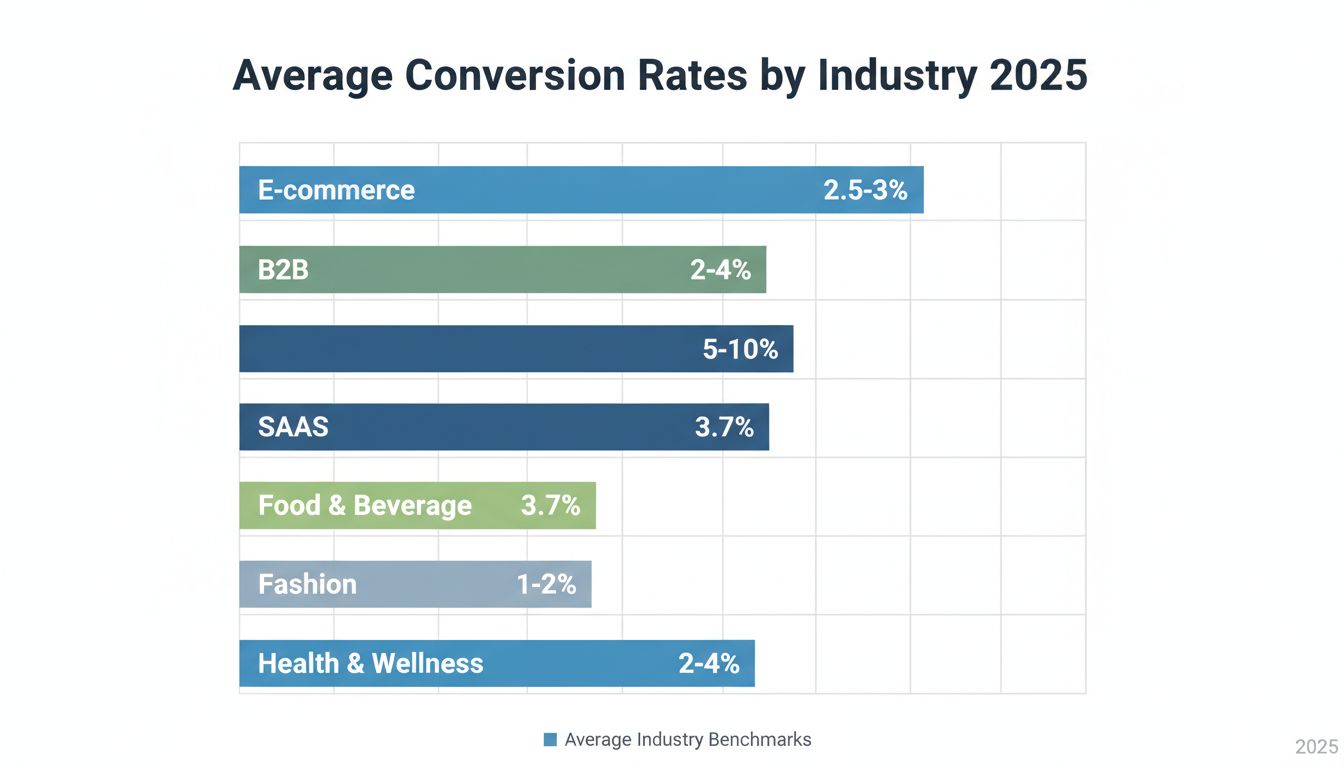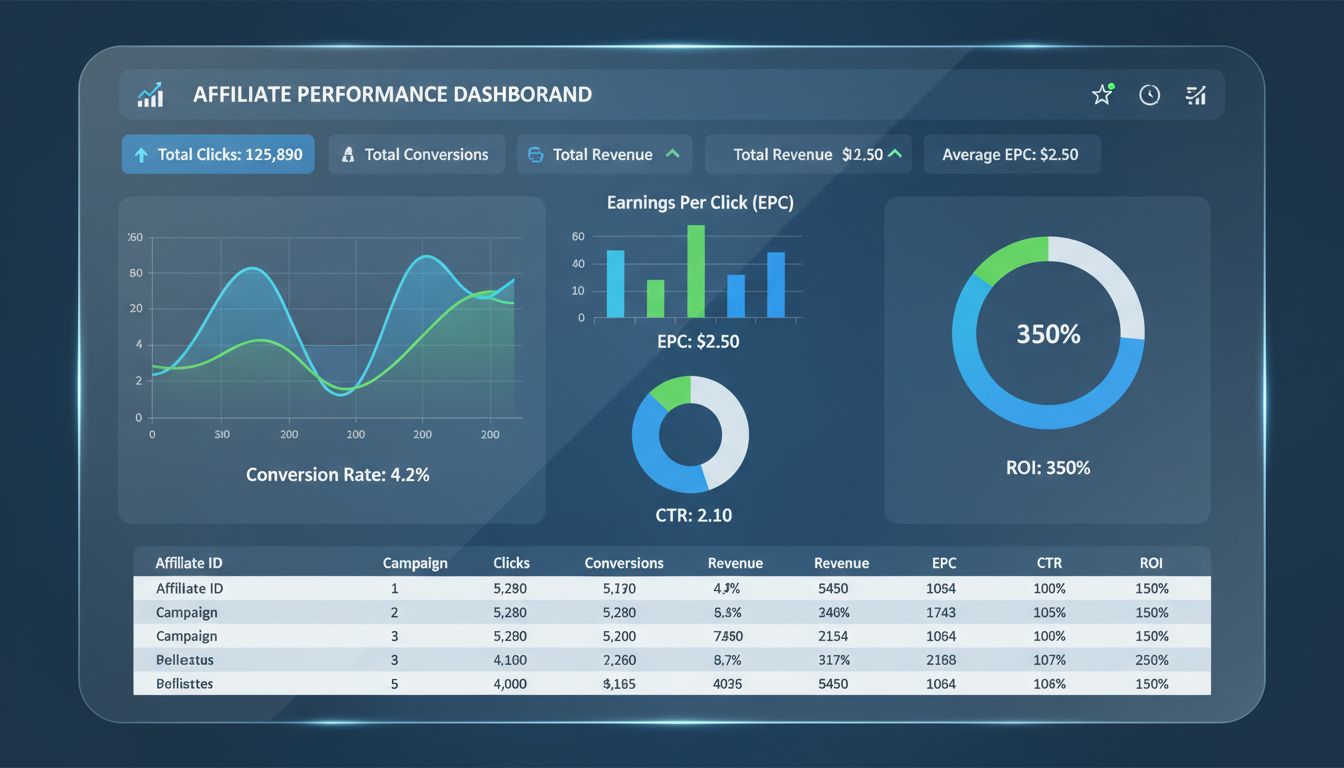
What is a Good Conversion Rate? 2025 Industry Benchmarks & Optimization Guide
Discover what constitutes a good conversion rate in 2025 with industry-specific benchmarks. Learn how conversion rates vary by sector, device, and traffic sourc...
Conversion rate measures the percentage of visitors who take a desired action, such as making a purchase or signing up, and is a key metric for affiliate marketing success.
Transactions, registrations, signing up for a newsletter or any other action. This is a conversion of a visitor to a customer. This is the main target of every affiliate . It is possible to measure it. Conversion rate expresses the percentage of visitors that changed into customers.
Conversion rate also depends on the type of industry and a brand. It defines how brand contributes to the conversion and how good and effective campaign is. If a company want to increase sales, it is necessary to raise conversion rate.
A conversion rate is a pivotal metric in the realm of digital marketing, representing the percentage of users who accomplish a desired action out of the total number of visitors. This desired action, referred to as a conversion, can vary broadly depending on the business objectives. It could involve actions like making a purchase, signing up for a newsletter, completing a form, or downloading a content piece. In the sphere of affiliate marketing and associated software, grasping conversion rates is critical for optimizing marketing campaign performance and maximizing return on investment (ROI).
In affiliate marketing , conversion rates hold substantial importance as they directly affect the earnings of both affiliates and merchants. Affiliates receive commissions based on the successful conversions they generate. Consequently, a higher conversion rate translates to increased revenue for affiliates and augmented sales for merchants. For affiliate software, tracking and analyzing conversion rates are crucial for identifying the most effective campaigns, thereby enabling enhanced targeting and optimization strategies.
Conversion tracking is a fundamental aspect of managing a successful affiliate marketing program. It enables businesses to evaluate affiliate performance and detect inefficiencies. Without conversions, affiliate marketing efforts are futile. Conversion tracking not only helps in measuring ad effectiveness but also aids in minimizing costs while boosting revenue by focusing on strategies that work.
Calculating conversion rate is a straightforward process. It involves dividing the number of conversions by the total number of visitors or interactions, and then multiplying by 100 to derive a percentage. Here’s the formula:
Conversion Rate (%) = Number of Conversions / Total Number of Visitors * 100
For instance, if an affiliate marketing campaign results in 200 conversions from 10,000 visitors, the conversion rate would be:
Conversion Rate = 200 / 10,000 * 100 = 2%
Various elements can influence conversion rates, and recognizing these can lead to improved optimization strategies:
Conversion Rate Optimization (CRO) involves refining a website or landing page to augment the percentage of visitors that convert into customers. Here are some strategies for effective CRO:
Conversion rates can vary significantly by industry, conversion type, and traffic source. For instance, e-commerce sites might observe average conversion rates around 2-3%, whereas B2B lead generation forms may exhibit higher averages. It’s crucial to compare your conversion rates against industry benchmarks to accurately evaluate your performance. According to OptiMonk, a “good” affiliate conversion rate typically ranges from 1% to 5%, with potential for higher rates when targeting engaged audiences or offering attractive deals.
Affiliate software frequently integrates conversion tracking features that enable affiliates and merchants to monitor campaign effectiveness. By establishing conversion tracking, marketers can gain insights into which affiliates are driving the most conversions, which traffic sources are most effective, and where bottlenecks in the conversion funnel might exist.
To bolster conversion rates in affiliate marketing, consider the following strategies:

Conversion rate is calculated by dividing the number of conversions by the number of visitors.
A good conversion rate varies depending on the type of business. Generally speaking, 3% to 4% is considered good. However, certain industries can reach upwards of 15% conversion rate.
There are many ways to improve conversion rate, such as targeting the right audience for the product, simplifying the customer journey, and having a strong call-to-action.
Discover how Post Affiliate Pro can help you track, analyze, and optimize your affiliate marketing conversion rates for maximum ROI.

Discover what constitutes a good conversion rate in 2025 with industry-specific benchmarks. Learn how conversion rates vary by sector, device, and traffic sourc...

Learn how to calculate conversion rate with our comprehensive guide. Discover the formula, calculation methods, industry benchmarks, and optimization strategies...

Learn how to measure affiliate performance with key metrics like conversion rate, EPC, ROI, and CTR. Discover best practices for tracking affiliate success and ...
Cookie Consent
We use cookies to enhance your browsing experience and analyze our traffic. See our privacy policy.